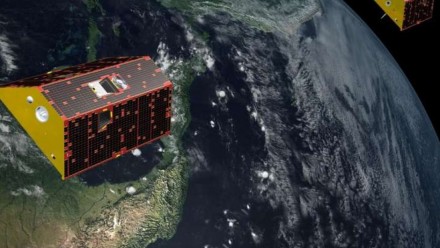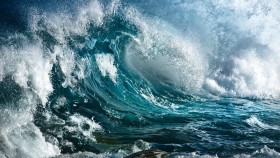Australian scientists weigh Greenland
When the heatwave hit Greenland in early August, Paul Tregoning from the Australian National University in Canberra was waiting for the first data from NASA's new GRACE-FO mission.
GRACE-FO stands for Gravity Recovery and Climate Experiment Follow On and it uses a pair of satellites that literally weigh the Earth's water from space by detecting tiny changes in gravity, caused by changes in mass on Earth.
"One satellite is following 200 kilometres behind the other," Dr Tregoning explained.
"The change in distance between the satellites is measured really accurately, down to a 10th of a thickness of a human hair, or about a micro-metre.
"If there is less ice in a location, then there'll be weaker gravity that will affect the change in distance between the satellites, which is what we measure."
Like a huge ice cube, as Greenland melts it weighs less. These changes in mass affect how the satellites orbit Earth, which can be detected in the measurements made by GRACE-FO.
Dr Tregoning's team have devised a new way of calculating the weight of large masses like the Greenland ice cap, using data from GRACE-FO.
The first GRACE satellites were launched in 2002, the mission going on to far outlive its five-year design lifespan.
But in 2017 the first GRACE satellites finally stopped working and climate scientists lost one of their most powerful tools to track ice cap melt.
New GRACE Follow-On satellites were launched in 2018, with technology on board based on designs by the ANU's Daniel Shaddock.
In recent months, the first verified data from the new GRACE-FO mission was released publicly by NASA. But it required expert knowledge to turn instrument data into estimates of mass loss of ice sheets.
"We've got our eyes back in the sky. We can see again what's going on," Dr Tregoning said.













